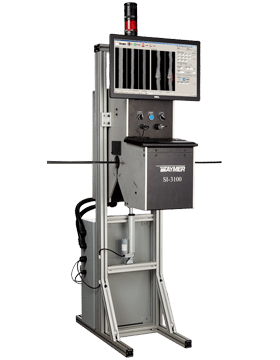March 21, 2019
FeatureScript by Onshape Used by Taymer Engineers
READ TIME: 4 MINS
Onshape FeatureScript – How Taymer Engineering Created Custom Designing Features
Before Onshape FeatureScript, the Taymer Engineering team found themselves in the enviable position of being able to choose from among many cloud-native products when it came time for developing their own design. They ultimately settled on Google’s spreadsheets app because they were drawn towards its simple and intuitive interface, which made them more flexible than other options like Microsoft Office 365 or Sketch App by Zoho Corporation.
The Taymer Engineering team had been gridlocked by a seemingly immovable obstacle in their path – data management headaches. They left behind an aging file-based CAD platform because it no longer offered clean architecture for design features and designs, leaving them with too many different versions of each item stored throughout SOLIDWORKS vaults that could be difficult to keep track of who owned what when students came back from coops or employees changed jobs within company lines.
Since its inception, Taymer International Inc. has been a world leader in manufacturing equipment for the wire & cable, pipe & tube, and fiber optic industries. Taymer’s technology has also branched out to include the medical, pharmaceutical, packaging, and metal industries.

Image curtsey: Taymer Engineering
One of the company’s latest innovations is its computer vision systems that detect product surface and dimensional defects, measure wrapping angles, inspect color quality, and verify print quality in-line during production.
This technology has helped Taymer International Inc. stay ahead of the competition and maintain its position as a world leader in manufacturing equipment.
Onshape enables McGaffey and his team to design new machines more efficiently. “With Onshape, working on separate branches of a design just feels a lot cleaner,” McGaffey says. “I find that building multiple versions of a machine in separate workspaces works a lot better for us.”
Discovering the Business Benefits of FeatureScript
Although the original motivation for switching to Onshape in 2019 was to fix data management, McGaffey says that the cloud-native SaaS product development platform has already encouraged his team to rethink its entire design process. The most notable example has been with FeatureScript, Onshape’s programming language that can be used to create design features of CAD specific to an industry or to even just an individual product with Onshape FeatureScript.
This has allowed McGaffey and his team to be far more agile when it comes to design iteration.
“With FeatureScript, we can prototype new features very quickly and then test them out with users,” he explains. “We no longer have to wait for a software update or for a new version of Onshape to be released; we can just add the new feature ourselves and see how it works.”
The benefits of this new approach are already being seen. For example, the team has been able to develop a new product in just three months – a process that would have taken much longer if they were still using traditional CAD tools.
When it comes to labeling cables, there can never be too much repetition. That’s why the Taymer team created a custom FeatureScript design feature that automatically generates 3D models of hot foil printer inserts used to label miles and miles of cable with Onshape FeatureScript.
This feature allows customers to select the text they want repeating on their cables, as well as the font and size. The inserts are then automatically generated in 3D and sent to the customer for approval.
Screenshot curtsey: Taymer Engineering
McGaffey’s colleague, mechanical engineer Andrew Barolet, has coded a Taymer-specific Onshape FeatureScript that automatically generates 3D CAD models of new printer inserts. Every cable product requires its own unique printer insert, which must be created letter by letter (or number by number).
Previously, the company kept track of its printer inserts with 2D drawings because it was too labor-intensive to justify 3D modeling each one.
“Having this new capability to have FeatureScript automatically take a CSV text file right from the customer’s order and generate a 3D model of the printer insert is going to help with our traceability,” Barolet says. “We can generate an entire Part Studio of multiple inserts just based off that CSV.”
Taymer no longer needs to manually create each 3D model, saving valuable time and money and it will also help with traceability as the company can now easily track how each cable product is manufactured.
Hot foil printer inserts need to be changed for every custom machine job: Image courtesy of Taymer
The Future With FeatureScript
Since the company has been using Onshape, Barolet has found that by utilizing FeatureScript, they’re able to significantly expedite their process.
“The old way of doing things would require us to ask the customer to give us a sample of their printer inserts so we know how to make them the exact same shape,” he says. “Whereas with the 3D model, we’ll immediately know how to make exactly what they need or quickly make updates. FeatureScript is going to significantly expedite our process.”
As McGaffey and Barolet continue to develop new features with Onshape FeatureScript, they see other useful applications for the scripting language in the future. One such application is the development of a “Vision Inspector Layout” custom feature. This feature would quickly generate a skeleton model of their computer vision systems, giving customers an idea of the footprint of the machine they’d like to order based on the kind of cameras, number of cameras, product diameter, and lighting requirements. Such a feature would help turnaround quotes for customers a lot faster and hopefully streamline their design process as well.
TriStar Digital Thread Solutions welcomes questions. Feel free to CONTACT US if you can’t find what you’re looking for, or call us at 800-800-1714












Leave A Comment